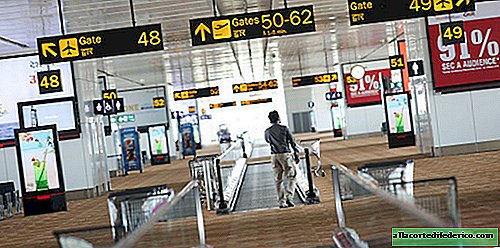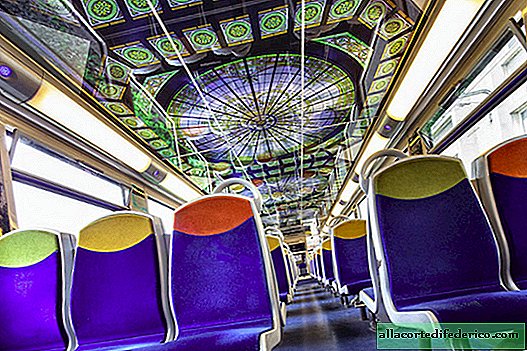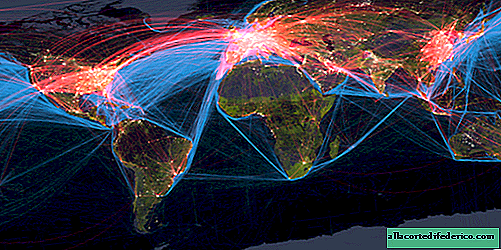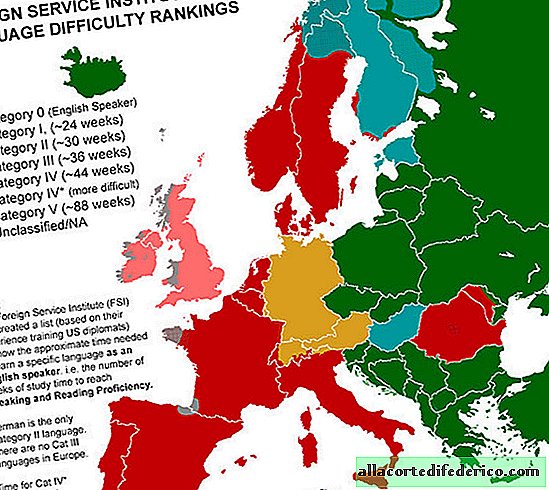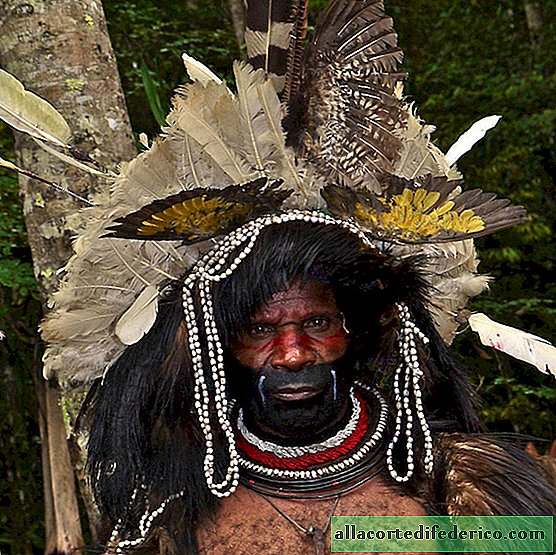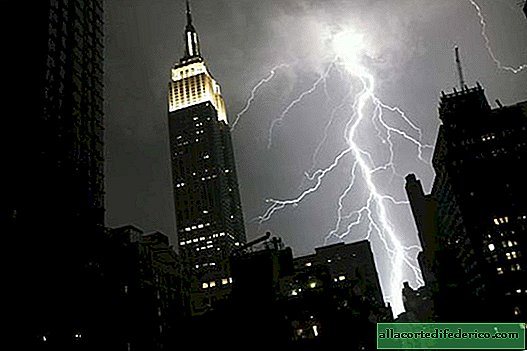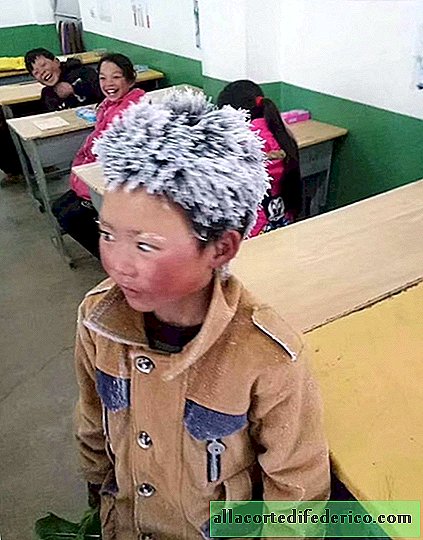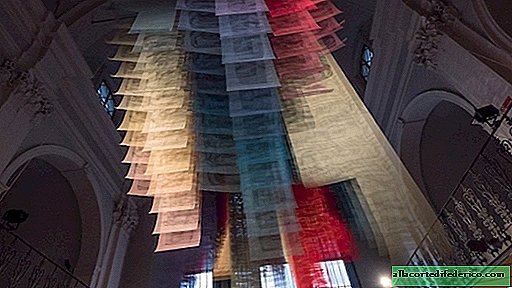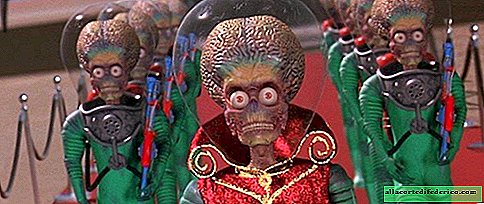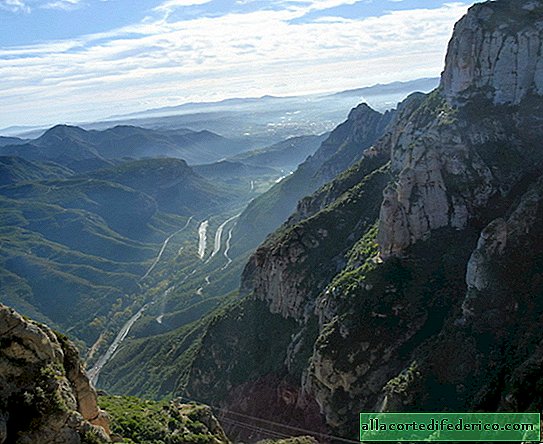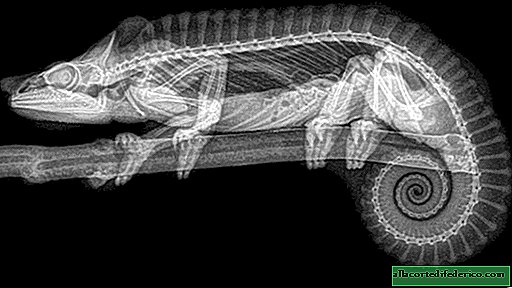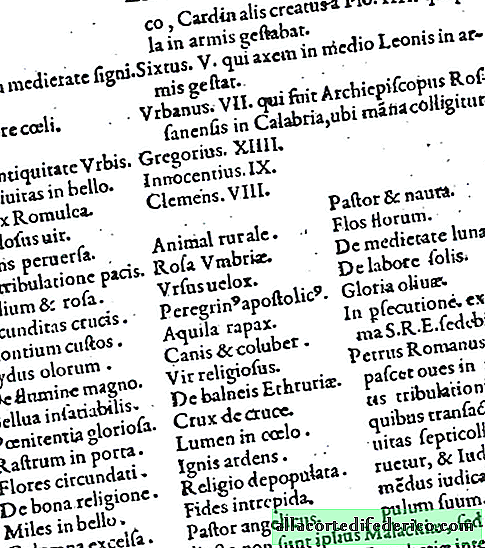Brussels
For six years I knew practically nothing about Brussels. My idea of this city was formed solely on the basis of ... news stories. A correspondent with a microphone stands against a background of tall buildings in which a gray sky is reflected, and casually talks about the next meeting of the European Parliament. Yes, in an inexperienced traveler the image of Brussels is primarily associated with European officials, politics, bureaucracy ...
For me, everything changed in the fall of 2010, when I decided to leave Moscow and go to conquer the capital of the European Union. After several years of living in Brussels, I realized that under the strict image of the political center of Europe hides a vibrant, vibrant, multifaceted city that can awaken the most deep-seated emotions and desires in travelers. 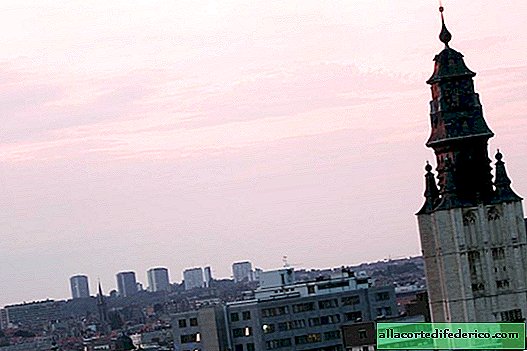
Here is my personal opinion. Brussels is a mystery city, a thing in itself, an explosive mixture of cultures and peoples. The incompatible is combined here: a rich business district borders on red light district; expensive restaurants stand side by side with stalls with fried potatoes; ancient churches grow right among the gray square concrete houses. Today's Brussels fully justifies its title as the center of Europe, which for its long life has absorbed so many different cultures and traditions that the head of an unusual tourist is spinning. Therefore, it is the duty of every self-respecting traveler to visit this city. I believe that it is impossible to understand Europe without having been to Brussels.
How to get there
By plane
From Moscow to Brussels can be reached by direct flights of Aeroflot and Brussels airlines. Their prices are approximately the same. The significant difference is that Aeroflot flies from Sheremetyevo, and Brussels airlines from Domodedovo. At the same time, Aeroflot has two flights a day (morning and evening), and Brussels airlines has only one daily flight.
Travel time in is about three and a half hours. Tickets cost from 220 to 500 EUR (from 14 to 35 thousand rubles according to the current Central Bank rate at the time of writing). It all depends on the time of booking and the type of ticket.
From St. Petersburg to the capital of the European Union will be more difficult to get. Unfortunately, there are no direct flights to Brussels from the northern capital. Residents of St. Petersburg have to fly with transfers through Moscow, Frankfurt, Asmterdam, Helsinki or Zurich.
Travel time will be at least five hours. Ticket prices also start at approximately 220 EUR.
You can monitor promotions and special offers for air travel, as well as familiarize yourself with options for docking on aggregator sites or, for example, here.

From the airport to the city center you can get in all the traditional ways - by taxi, bus or train. A taxi ride will cost you 30-40 EUR. The bus will cost much cheaper (approximately 3 EUR if you buy a ticket in advance in the machine). A bus stop is located directly in front of the arrivals terminal (level 0). Here you can catch the STIB bus, which takes you to the European Quarter in the company of European officials in 30 minutes, or the De Lijn bus. The latter stops at Brussels North Station, as well as at Roodebeek Underground Station and at the NATO building.
However, the most popular and fastest way to get to the city is still the train. Trains from the airport to the center run regularly, they are not late and in some twenty minutes will take you to the central Brussels station. At the time of writing, the ticket costs 8.60 EUR.
By train
In Brussels, there are many trains from different parts of both Belgium and Europe. Getting to Brussels by train directly from Russia is possible, but difficult. To do this, take the historic Moscow-Paris train and get off in Berlin. It takes about a day. Ticket prices and train schedules can be viewed on the Internet. In the German capital, you take the train to Cologne, located near the border of Belgium. From Cologne to Brussels it is just a stone's throw - just some one and a half hours. The ticket price will be about 30-40 EUR. 
Important! Buy tickets for domestic European trains in advance on the sites of regional carriers (SNCB or DB). This will save significantly.
By bus
If you have very little money, then you can also get to Brussels by bus. From major European cities this can be done on company buses Eurolines. You can also get from Russia by bus. A ticket will cost about 140 EUR. To do this, you will need to come to the Shchelkovo station in Moscow and catch the Ecolines bus. Buses run twice a week, depart late in the evening and after almost two days arrive in Brussels on the Rue Cardinal Mercier, which is located near the main station of the city. Tickets can be purchased online at Ecolines. 
By car
The way to Brussels by private car from Russia is likely to take you more than one day. If you are traveling from Moscow, then first your path will go along the Mink (E30 highway to Minsk), and then along the internal European routes (E40, E411, E19, A12, A201, etc.). In this case, you will enter the European Union through Poland. But first, you will need to drive through one of the customs points. There are three of them. These are Berestovitsa, Warsaw bridge and Domachevo. On my only trip to Europe by car, I drove through the Warsaw Bridge, which is located near Brest. I can say that this is a great opportunity to visit the landmark for every Russian person - the Brest Fortress, which for a long time will be remembered for its solemn and at the same time mournful atmosphere.
By ferry
Although St. Petersburg and Antwerp are connected by sea with transport links, there are tourist ferries from Russia to Belgium. Therefore, lovers of sea travel can only resort to the services of travel agencies offering cruises along the European coast with departure from the northern Russian capital. Perhaps then you can get off the ship in Antwerp and get from there by train to Brussels. Agree, not the best option.
hint: Brussels - time is now15: 0713 OctoberDifference in hours: Moscow & plus; 1 Kazan & plus; 1 Samara & plus; 2 Yekaterinburg & plus; 3 Novosibirsk & plus; 5Vladivostok & plus; 8When is the season. When is the best time to go?
People go to Brussels to explore city sights, so traveling here in winter or summer is entirely your choice. However, it is worth considering that Belgium is a rainy and chilly country with a temperate maritime climate, so an umbrella will not be amiss at any time of the year. My teacher at a Belgian university once said that tourists should give an umbrella right at the airport, because it is an absolutely necessary accessory for visiting the country. Yes, Belgians love weather jokes. And yet, in summer, sunny days are not as rare as, for example, in neighboring Netherlands. Colleagues of tourists will, of course, be larger, but they are unlikely to be able to spoil your vacation. Brussels is not such a visited city.

Brussels in the summer
Brussels is a very creative city. Therefore, in the summer he will be able to bribe you with a peculiar atmosphere of a traveling circus. Here and there you will meet street musicians, artists and just funny tramps, which is simply impossible not to fall under the charm of. Summer will be for you sometimes long walks through pretty streets, where the action from the famous Belgian comics takes place right on the walls of the houses. You will eat waffles with cream right on the go, without breaking away from exploring the city. Perhaps you are lucky, and in honor of your arrival, a real carpet of flowers will be spread on the main square of the city (this happens in August every two years).
Temperature in summer rarely rises above 25 degrees. However, weather surprises happen here as elsewhere. Over the four years of my life in Belgium, I managed to find incredible heat here, when the temperature reached 30 degrees, and a terrible cold.
There are a lot of tourists in the summer in Brussels. Of course, you will meet organized groups of Chinese and countrymen from the vastness of our country, and noisy Americans. Nevertheless, Brussels is not as visited as Paris or Prague, so you should not be afraid of crowds.
Brussels in the fall
The real autumn in Brussels comes quite late in comparison with the middle Russian strip. Trees are covered with yellow leaves only by November, and the weather in September and October is still quite warm and conducive to walks. Crazy by nature, Brussels in autumn looks more harmonious and peaceful than ever. This city contains many medieval features that echo the autumn wilting of nature. In the end, when, if not in the fall, reflect on the eternal, contemplating the fine-tuned, but faded architecture of medieval Europe.
Brussels in the spring
In spring, a landmark event takes place in Brussels - Brussels Jazz Marathon (Brussels jazz marathon) The venue for the marathon was not chosen in vain, because Belgium is the birthplace of the saxophone! During the marathon for three days in all the main squares and streets of Brussels, you can absolutely free to attend the performances of various jazz groups in Europe. The marathon is quite famous, so with a certain amount of luck you can meet real celebrities here.
The temperature in spring in Brussels is about 10-12 degrees Celsius, but the weather is quite deceptive. Periodically, a very cold wind blows and it rains, so it is better to dress warmer. But tourists in the city during this period are not very many. And those who are, behave quietly and intelligently - because they come to enjoy the divine game of musicians.
Brussels in winter
In winter, it often rains in Brussels and there is high humidity (the proximity of the North Sea affects it). Therefore, the winter season in Brussels is a good time to visit museums and restaurants, which are a dime a dozen. In very bad weather, you can go to the pub and warm up with a pair of laces of excellent Belgian beer. In addition, Christmas markets are held in Brussels in winter, as in other European cities, invariably captivating tourists from different parts of the globe with their fabulous atmosphere.
Brussels - monthly weather
hint: Brussels - weather for the months of January January ± 2.2 February ± plus 2.5 March ± 5.8 April ± 8.3 May ± 12.3 June ± plus 15.4 July ± 17.1 August ± 17.1 September ± 14.5 October ± 10.6 November ± plus 5.8 December & plus; 3.3Areas. Where is better to live
Brussels is one of those cities where the boundaries of the neighborhoods are by no means ephemeral and sometimes share two completely different worlds. At the same time, you should not expect that the central quarters will be cleaner and richer than the suburbs. Brussels is fraught with many surprises. Sometimes not very pleasant.
What we used to call Brussels actually bears the name Brussels Capital Region. This is a whole administrative entity, which includes city (differently commune) Brussels - A very small area on which the main city attractions, expensive hotels and shops, as well as buildings of European organizations are concentrated.
In addition, the metropolitan region consists of another 18 administrative units. Let's pay attention to the most basic ones. 
A small quarter is directly adjacent to Brussels. San gilles (St-gilles) This is the most creative, hooligan and youthful place in Brussels and at the same time the place of residence of many migrants. This quarter is as diverse as the city itself. Accommodation here is inexpensive, but not everyone will like the atmosphere. More recently, a huge image of a male penis appeared on the walls of one of the houses of the quarter. The city authorities discussed for a long time whether it is worth recognizing the image as a work of street art, but, in the end, decided to paint over it.
To the south of St-Gilles is a commune. Foret (Forest). As the name suggests, this is a very green area. It combines nine parks, as well as rare art deco monuments. Brussels go here to nature. In the summer, a lot of people relax here on the lawns or walk along the wide avenues.
Adjacent to Forest Ixelles (XL) sheltered two universities on its territory - Flemish Vrije Universiteit Brussel and french Université libre de Bruxelles. This quarter has a bizarre shape: it is split into two parts by the long Avenue Louise, which is part of the central commune of Brussels, and is an excellent reflection of Belgium itself, divided into two parts - Flanders and Wallonia. There are a lot of three- and four-star hotels that are suitable for middle-class tourists. All Ixelles hotels you can find on the map below. You can book hotels at Bucking - here, and compare prices from different sites here. 
District XL bordered by the commune Ukkel (Uccle) This is a calm, residential quarter - tourists rarely settle here because of their remoteness from the center, but Brussels residents themselves consider Uccle one of the best neighborhoods for life.
Near Uccle are located Watermal-Boisfort (Watermael-boitsfort), Voluyève-Saint-Pierre (Woluwe-saint-pierre) and Voluyevo-Saint-Lambert (Woluwe-saint-lambert) - the most prosperous areas of the city. If you are renting an apartment (let’s say it’s here), it is to these quarters that I advise you to pay attention in the first place.
Bad counts are areas Scharbek (Schaerbeek) and Molenbeck-Saint-Jean (Molenbeek-st-gean) The latter appears on the news almost every day. This is a quarter almost completely populated by Muslims. Rumor has it that it is here that European Islamic extremism takes its roots. More recently, one of the large mosques was closed here, recognizing it as extremist. It’s definitely not worth going here at night.
Commune Schaerbeek, which is just a step away from the main Brussels attractions, is populated mainly by immigrants from Turkey and Morocco. This is where the Brussels Red Light District is located, which also has a reputation as one of the most dangerous and criminal places in the city.
Given all of the above, I advise you to be very careful about the place of choice of the hotel and in no case to book accommodation at random.
What are the prices for vacation
Brussels is, frankly, not the cheapest city in Europe. One trip by tram, metro or bus will cost 2.10 or 2.50 euros (depending on whether you buy a ticket at a kiosk or from the driver). In order not to spend a lot of money on transport, I advise you to purchase a card MOBIB. It costs 5 euros and allows you to buy tickets for public transport at a discount. For example, you can buy five trips for 7.30 euros.
You can eat in Brussels for a small amount. The fries and waffles here are always delicious and are sold on almost every corner. A weighty envelope with potatoes and sauce can be obtained for a couple of euros.
There are many hotels for any wallet in Brussels, because thousands of businessmen and officials are constantly flocking to this city. Expensive network giants such as Marriot, Hilton or Sofitelhostels for students. View offers in Brussels hotels here. Prices for accommodation in Brussels are approximately the same as in other major European cities and depend heavily on how much you book in advance. Most hotels are located in central Brussels.
hint: Cost of food, accommodation, transport and other currency: Euro, € US dollar, $ Russian ruble, rub| Eating (lunch / dinner) in a reasonably priced restaurant | 1071 rub |
| Lunch / dinner for two, 3 course, middle class restaurant | 4286 rub |
| McMill at McDonald's or similar combo lunch | 572 rub |
The main attractions. What to watch
Top 5
Manneken Pis
This is the main attraction of Brussels. It sounds promising, but in fact it is a small monument only 61 cm high, which is hidden in the middle of small streets not far from Grand Place (Grote Markt) The Belgians stir up interest in the unfortunate boy as they can. Firstly, they endlessly copy his image on all souvenirs. In the shops you can find mugs with a pissing boy, beer openers with a pissing boy, towels, pens, T-shirts ... the list goes on and on. Secondly, the boy is regularly dressed up.For example, during the World Cup, he is always dressed in football uniforms, and for Christmas - in the costume of Santa Claus. Thirdly, the boy even got friends - a pissing girl and a pissing dog.
All three sculptures are so tiny that they are not easy to find. And if pointers still lead to the pissing boy from the Grand Place, then you will have to work hard to find a girl and a dog. If you ask yourself this goal, it is better to ask locals. 
Grand Place (Grote Markt)
This is the main square of Brussels, which contains incredibly beautiful examples of Gothic medieval architecture - the house of craft guilds. These houses do not have numbers; they have their own unique names. The most important buildings here are the city hall and the King’s house (or the Bread House). It is on the Grand Place, under the walls of the Swan’s house, the Wolf’s house (indicated by the corresponding sculpture on the facade), the Fox’s house, the Rose’s house and others that host the city’s main events. 
Atomium
Atomium is a strange structure, exactly repeating the shape of the crystal lattice of an iron atom. Each ball of the molecule is connected to another long tube. Escalators are laid through the pipes, allowing you to move around the molecule. The molecules are several scientific and educational museums and a restaurant.
The Atomium was built for the 1958 World Exhibition and it was predicted a great future, but for some reason the monument could not find world fame. Belgians love to complain that the equally controversial Eiffel Tower has become a world-famous attraction, and the Atomium has been undeservedly forgotten. 
Comics
Do not be surprised that I included in the list such a seemingly strange sight. The fact is that the art of drawing comics in Brussels is highly respected and cultivated in every possible way (for Belgians, comics are precisely art). In 1993, the city authorities, in collaboration with the Museum of Comics (there is one!) Decided to perpetuate the painted characters on the walls of the houses. Now in Brussels there are entire tourist routes that allow you to view these houses in the vicinity. 
The most important comic book character for the Belgians is the young reporter Tintin and his faithful companion, the fox terrier Milu. In the 1970s, a monument to the famous hero in one of the parks of the Uccle commune was inaugurated in the city, but after numerous acts of vandalism and attempted theft, the monument was transferred to the town hall building. And only in 2011 did they decide to install the sculpture (however, already different) on the street, in Sablon Square, near the comic book store.
By the way, in Belgium there is also a museum dedicated exclusively to the work of the artist Erzhe, who came up with an unforgettable image of one of the main comic characters. It is located in the small campus of Luvan-la-Neuve, 40 km away. from Brussels.
European quarter
Euro Quarter is located in the city center. Here, in high-rise buildings of glass and concrete, thousands of officials from different countries of Europe spend their working hours. It is here that the European Parliament and the European Commission sit. By the way, you can enter the European Parliament building without hindrance and get acquainted with the situation. If the meeting room is free, then you will be allowed to go there. This is the policy of European organizations aimed at transparency and the absence of borders. 
Beaches. Which are better
It is easy to guess that there are no beaches in Brussels. It would be fun to imagine European officials resting in expensive suits on deck chairs, but, alas, the nearest beaches are in another part of Belgium. However, if you still unbearably want to go to the sea, getting there is not so difficult. To do this, you will need to catch a train to one of the coastal Flemish towns in Brussels. The most famous of them are Knokke and Ostend.
Churches and temples. Which are worth a visit
Cathedral of Saint-Michel-e-Gudul (Cathédrale Saints-Michel-et-Gudule de Bruxelles) is one of the main monuments of Gothic art. It was built in the XI century on the way to the merger of two strategically important roads - to Antwerp and Mons by the same architect as the city hall on the main square of the City.
The church is open to visitors from Monday to Friday from 7.30 to 18.00, on Saturday from 7.30 to 15.30, and on Sunday from 14.00 to 16.00. Services are regularly held here, which you can also visit (the most important on Sundays at 10:00). 
Church of Our Lady of Sablon (Église Notre-Dame des Victoires au Sablon) is also an example of the Gothic style and in practical splendor is not inferior to the cathedral of Saint-Michel-e-Gudul. It is also open to all comers and can surprise you with the bewitching sounds of the organ.
Sacre Coeur Basilica (Basilique du sacré-coeur) definitely deserves your attention, because it is the largest building in the art deco style in the world! The construction of this basilica began at the very beginning of the century, but stretched out for many years due to two world wars. Today this building, whose architecture resembles the famous Sacre Coeur in Paris, serves as a platform not only for worship, but also for meetings and exhibitions.
The basilica is open in the summer until 18:00, and in the winter until 17:00. From Monday to Saturday at 9:00 there are services. On Sunday at 10:00 there is a service in French, and at 11:30 in Flemish. 
In addition, in the back streets of Brussels, many more churches are hidden in temples (mainly in the Gothic style). This, for example, Notre Dame de Laken, Church of St. Mary and Brussels cathedral. If you have time, find these churches on a map. After all, they keep the unique spirit of the Gothic Middle Ages, which in our era is not so easy to find.
Museums Which are worth a visit
Royal Museum of Fine Arts (Musées royaux des Beaux-Arts de Belgique)
Here we are not talking about one museum, but about six. It is so many different museums that unite Royal Museum of Fine Arts. Together, they cover art from the 15th century to the present time (about twenty thousand works in total). Surely you do not have enough time and energy to inspect the entire museum complex. Then I advise you to limit yourself to a museum of old masters (Musée old masters), which contains paintings and sculptures of Flemish artists (Bosch, Van Dyck, Rubens and others), and the Magritte Museum (Musée magritte) The latter contains the most complete collection of works by the famous master of surrealism - Magritte. Can't remember who this is? I will tell you: this is the author of the same picture, which depicts a smoking pipe, and below it is attributed "This is not a pipe."
This is not the only world famous painting by the artist. Walking through the halls, you will surely meet a couple of familiar images.

Museum of Musical Instruments (Musée des instruments de musique)
In my opinion, this is the most interesting and unusual museum in Brussels. To begin with, it is located in an unusual beautiful building in the art nouveau style of Old England. The building was restored in the 2000s specifically for the museum. Now in its walls are about 8,000 musical instruments. At the entrance you will be given special headphones. When you approach some instruments, the music they make in real life will sound from them. 
Belgian Center for Comics (Musée belge de la Bande dessinée)
The museum building itself also deserves a close inspection - this is an art deco monument designed by one of the main Belgian architects - Victor Horta. 
In addition, you can visit Royal Belgian Institute of Natural Sciences (Institut royal des Sciences naturelles de Belgique), which introduces its visitors to all kinds of life forms, Auto World (Autoworld), which contains 250 vintage vehicles, as well as Belgian Museum of the Royal Army and Military History (Musée Royal de l'Armée) or Tram Museum (Musée du tram).
Parks
Brussels Park (Parc de Bruxelles) located in the very center of the city (stop Metro Parc) and is included in the same architectural ensemble with the royal palace. This is a large and bright park, where many Brussels people like to spend their free time. An interesting fact: under the park there is a fortified bunker, built in case of a nuclear war. You won’t be able to inspect it, but the very fact that you walk on the roof of a huge bunker can make your walk more spicy. If you are in Brussels at the end of the summer, you can also look into the Royal Palace (open from July 22 to September 4 from 10:30 to 15:45). 
Sankantener Park (Parc cinquantenaire) in its scope, it does not lag behind the central royal park. The park was laid out on an area of 37 hectares for the world exhibition of 1880. It is framed by a number of museums, including the Belgian Museum of the Royal Army and History.
Park Mini-Europa (Parc Mini-Europa) - one of the iconic places not only of Brussels, but also of Belgium. In the park you can find the most basic sights of the European continent in miniature. Many layouts are equipped with special mechanisms that allow you to turn on multi-colored lights or set in motion certain elements. So in mini-Europe, fountains murmur, trains ride and flags develop. If you want to take a picture with the Leaning Tower of Pisa or the Cathedral in Santiago, and your next vacation will not be waiting for you soon - welcome to mini-Europe!
Tourist streets
The center of Brussels is often conditionally divided into the Upper and Lower City. In the upper city, which is located on the so-called Mount of Arts, there is the Royal Palace with a park, a museum of musical instruments and the Royal Museum of Fine Arts. The monument is crowned by a monument to King Albert II.
In the Lower City, where simple people once lived, there is the Grand Place, a pissing boy and many small old streets. Upper and Lower Brussels is the most tourist area of the city. Here are all the main historical streets. If you want to limit yourself exclusively to tourist Brussels, you are here. 
What to see in 1 day
To explore Brussels in one day, I can offer you one simple route.
Start with the Grand Place (on the map - the Big Market), look at the Manneken Pis (on the map - the point under the Big Market), and then go up to the Upper Town along Lombar Street.
On the way, you will meet many cafes and souvenir shops. When you get to the Mount of Arts (Mont des Arts), stop next to the statue of Albert II, follow the direction of his hand and admire the Lower City from above.
Then go straight ahead, and upon reaching the royal palace, turn left. Before you stretches that very majestic royal park.
Get to the central fountain, then take a little to the right and go out onto the street Beliar. She leads to the European quarter. If you still have strength, continue straight ahead and go straight to Sankantener Park. Bypassing the park, you can go back a little, take the subway at Schuman Station and get to the hotel or airport. This route without stops takes about an hour. 
If you don't like such long walks, the route can be shortened a bit. From the European quarter, you can immediately go back and catch the train at the Trone metro station, or turn left and go to Louise station, where the magnificent Palace of Justice is located (see map). 
What to see in the surroundings
Belgium is a small country, so you can get from the capital by train almost anywhere. If you have enough time, go here, choose a place, buy a ticket and in an hour and a half you will already be in place. Louvain, Ghent, Antwerp and other beautiful cities are no more than 100 km away. from the Belgian capital.
hint: Routes to neighboring cities Brussels - Anderlecht 2 km Brussels - Schaerbeek 2 km Brussels - Evera 4 km Brussels - Ganshoren 4 km Brussels - Voluyev-Saint-Pierre 4 kmFood. What to try
The main Belgian dishes, no matter how funny it may sound - french fries and waffles. Only controversial Belgians were able to give these simple dishes the status of national dishes. However, in Brussels, each phenomenon has two sides, and food is no exception. Brussels - the capital of French fries, at the same time bears the status of one of the most gastronomically attractive cities in Europe. It is believed that it is in Brussels that they prepare almost the most delicious seafood dishes.
To find out where the french fries are fried in the finest butter, waffles are watered with the most delicious syrup, and seafood is served in the most unusual way, go here. And, of course, do not forget to try Belgian chocolate for dessert.
Recommended Places
Among the must-visit places I can recommend an unusual place La fleur en papier doré (A flower made of gilded paper). It is located in the center, near the Magritte Museum (Rue des Alexiens 55). Once this cafe served as a meeting place for Brussels surrealists led by the master himself. Until now, the cafe owners carefully preserve traces of his presence. The walls are decorated with photographs, drafts, drafts, letters of the beginning of the century. Here you feel in a museum, not in a cafe. But coffee from this does not become less tasty here. For the forgetful, the French door says "Ceci n'est pas un musée (on consomme)", i.e. "This is not a museum (eat)." 
Budgetary
The most budgetary places in Brussels are, of course, small stalls with fast food, waffle (e.g. Waffle factory), cozy coffee houses (e.g. Cafe la brocante or Or cafe) as well as bakeries where you can have a cup of tea or coffee with a croissant (e.g. nets Paul).
Mid level
In Brussels there are many establishments with an average price level. Of course, the restaurants next to the Grand Place (e.g. on the Rue des Bouchers) will be the first to catch your eye. If you are too lazy to go far, you can eat here too, but I recommend looking for more interesting places (all the more so since, on the orders of the burgmest since November of this year, restaurants in the historical part of the city removed tables from the street). For example, the Restobières restaurant, where all dishes (including desserts) are prepared on the basis of beer.
Expensive
Perhaps the most famous expensive restaurant in Brussels is Belga queen. It is located on the site of a former bank vault, and the atmosphere is a match. Other gourmet restaurants that are definitely worth mentioning are Comme chez soi (one Michelin star) Rabassier, Bon bon and Dolce amaro.
Holidays
Brussels is often used as a venue for various international festivals (e.g. for the jazz festival that I mentioned above). But there is a place for traditional holidays. For example, Ommegang.
In addition, in the summer, Brussels, like other Belgians, celebrate their country's independence day. Every year, on July 21, a real festive bacchanalia takes place on the streets of the city. Soldiers of the national army come to the city on real military equipment, which then allows you to inspect nearby. Dozens of music groups perform in squares and alleys. People in national costumes march through the streets of the city. Children ride on the carousel. Marching orchestras. Flags are evolving everywhere. The Belgians really celebrate the national holiday on a grand scale, because Belgium is a small, but proud country. 
Security. What to watch out for
Brussels is not the safest city. As I wrote above, there are quarters where it is strongly not recommended to enter at night. And in general, I would not advise you to walk around the center of Brussels late at night without the need. I know what I'm talking about, because your humble servant has already become a victim of Belgian scammers. One night, at the northern station of the city (Gare du Nord), located in Schaerbeerk, my bag of money and documents was stolen and instead of flying to Moscow, I had to return to my Belgian rented apartment. My Moscow friends did not wait for souvenir chocolates, and I had to renew my residence permit again. By the way, a couple of months after the incident, the Belgian police still found my wallet and Russian passport. So in emergency situations, you can and should contact the police.
Things to do
Shopping and shops
The main shopping street in Brussels is Rue neuve. Here, on the longest pedestrian street of the city, all the major shopping centers (Inno and City2), budget chain stores (Zara, H&M and others) are concentrated, as well as many movie theaters where films are shown, in particular, in English. During sales, which are traditionally held at the end of each season, there are always a lot of people here - both tourists and local residents.
Luxury brands and Dizaneir boutiques are located in a slightly different part of the city:
- on a wide avenue louise (Karen Millen, Sarah Pacini et al.),
- on Waterloo Boulevard (Sonya Rykiel, Chopard, Versace, Cartier, Marks & Spencer),
- on Antoine-Dansaert Street.
 Also, many shops sheltered Royal Galleries of St. Hubert (Galeries royales saint-hubert), which are located in the very center, near the Grand Place. The galleries consist of three long walkways (King's Galleries, Queen's Galleries and Prince's Galleries). Mostly expensive shops are located here (e.g. Longchamps)
Also, many shops sheltered Royal Galleries of St. Hubert (Galeries royales saint-hubert), which are located in the very center, near the Grand Place. The galleries consist of three long walkways (King's Galleries, Queen's Galleries and Prince's Galleries). Mostly expensive shops are located here (e.g. Longchamps)
In addition, there are many markets in Brussels. The largest and most famous flea market unfolds every weekend in the square Jeo de bal (Place du jeu de balle) Also worth mentioning is the antique market in the square Grand Sablon (Grand sablon) It works on Saturdays from 9 to 17, and also on Sundays from 9 to 14 and can be a real find for lovers of antiquities. Clothes and food are bought on Market at the South Station (Marché de midi) In fact, this market is so large that it contains everything from African masks to cheeses. Well, artists usually gather in the market in the commune of Uccle (Marché de l'art). 
Bars Where to go
The main bar in Brussels is, of course, Delirium (by the way, in the immediate vicinity of it is the "Pissing Girl"). Here you can try almost all varieties of the famous Belgian beer (more than 2,000 types). By the way, the bar also has its own brand. The symbol of a bar, a pink elephant, is known to every Brussels woman. Therefore, it is always noisy, fun and crowded - the bar eagerly opens its doors for both locals and tourists. The prices here are affordable and the atmosphere is friendly. The bar is usually open until four in the morning and is located at Getrouwheidsgang 4. 
Other bars I would recommend visiting are La becasse and A La mort mortal.
Bar La Beccasse is already interesting because next year it will celebrate 140 years of its existence! This is a place with low prices, where you can penetrate the rich history of Belgian brewing.
Bar A La Mort Subtile is somewhat similar to La Becasse - wooden tables and chairs, large open spaces, an atmosphere of friendly drinking. But here you will also be able to surprise with their own brand of beer, which has been brewing for about a hundred years.
In general, if you wish, you can go to any bar - the quality of beer in Brussels is everywhere at its best.
Clubs and nightlife
The nightlife in Brussels may not be as active as in Berlin, but still quite up to the mark. First of all, I advise you to visit the club Spirito, known for being in the building of the former Anglican church, which inevitably creates a very unusual atmosphere. There is face control at the entrance, so you need to dress appropriately. Entrance is paid (from 15 EUR). 
Other famous night clubs in Brussels are Fuse (a large techno club with several venues and a relaxed atmosphere, entry is about 10 EUR) and Le You (a democratic club popular among young people, entry is 10 EUR).
Extreme sports
There are probably no opportunities to engage in extreme sports in Brussels, unless you consider marathons for high-speed beer drinking to be such. But seriously, then I can offer avid extreme lovers to go to the east of the country, where the Ardennes Upland provides travelers with rich opportunities for climbing, caving and kayaking.
Souvenirs. What to bring as a gift
Traditional Belgian souvenirs are chocolate, beer and lace. Chocolate in Brussels is the best in the world. I am sure that having tried it, you completely agree with me. The most famous and expensive manufacturer is Pierre marcolini. The price of each little candy starts from 1 EUR. More budget brands - Leonidas, Neuhaus, Godiva. A small gift box of chocolates from these manufacturers will cost you 5-10 EUR. 
There are countless types of beer in Brussels. There are both strong dark varieties and light fruit varieties. Beer in Brussels is the main national drink. As a souvenir, I advise you to carry Trappiste (monks cook it) or Kriek (beer with cherry syrup). In general, it is better to consult a consultant at any beer store.
The tradition of weaving lace in Brussels is also rooted deep in history. In the souvenir shops of the Belgian capital, you can find fans, napkins, tablecloths, blouses and many other lace products. However, this beauty is quite expensive, because all things are done manually.
By the way, in Brussels there is also a museum of costume and lace.
How to get around the city
It is most convenient to travel around Brussels by tram or metro (they are serviced by STIB, I wrote about ticket prices above). Here you can also rent a bike, scooter or car. Choose what you like best.
Taxi. What features exist
All taxis in Brussels are part of a single urban system and operate on the same principle. All of them undergo rigorous technical testing, so a popular service like Uber in Belgium is banned. Typically, taxis can be paid in cash or by credit card. It is most convenient to get in a taxi in specialized parking lots. Alternatively, you can order it by phone.
Here are the prices for their services.
- landing during the day costs 2.4 EUR, at night - 4.4 EUR,
- 1 km. the journey costs 1.6 EUR during the day and 2.3 EUR at night,
- for waiting and driving at a speed of less than 19 km / h, passengers take 0.15 EUR per 1 minute or 30 EUR per hour.
Trams
Trams in Brussels are one of the most common modes of transport. They walk both on the ground and above the ground (for example, lines 3, 4 and 7) and serve all 19 communes of the Brussels-capital region. The tram park is constantly being updated, and now on the streets of Brussels you can see both old cars and new cars.
Underground
Metro in Brussels has existed since 1976 and has 69 stations. The Brussels metro (by the way, the only metro in Belgium) is open from 5:30 in the morning until midnight. An interesting detail: in the Brussels metro, as in the Moscow metro, there are musicians. Only in Brussels their activities are strictly regulated - in order to give concerts on the subway, you must obtain special permission. After that, you can go to entertain passengers (but only in special places indicated by the symbol in the form of a note).
It is also worth noting that the Brussels metro can be quite dangerous at night. So for single girls returning from a disco, it is still better to take a taxi.
To pay for the Brussels metro, I advise you to use the same plastic MOBIB card as for trams and buses. It can be purchased at the kiosks of the city (in the same place where they sell fresh press and tobacco). Without a card, one metro ride will cost you the same 2.10 EUR. A ticket for one trip can be bought in a vending machine at each metro station. All tariffs for Brussels public transport can be found here.
Buses
Buses in Brussels are also quite popular. In total there are about 50 routes. Some buses run regularly, while others only during rush hour, in the evenings or at night (the latter are called Noctis and go on Fridays and Saturdays until 2:45 a.m.) They are serviced by the same transport company STIB. 
Vehicle rental
The procedure for renting a car in Brussels is no different from the same procedure in any other civilized city. You can rent a car if you are already 18 years old, and your driving experience is at least 1 year. For registration you will need a credit card, passport and driver's license of international standard. You can reserve your car in advance here. The price of gasoline in Belgium is higher than in Russia. At the time of writing, the price for the 95th gasoline fluctuates around 1.2-1.3 EUR.
Tips for motorists
Belgians drive quite accurately. Of course, there is always a chance to stumble upon an inadequate Polish trucker, but on the whole Brussels is a favorable place for car lovers. As in any major city, there are traffic jams. But dead traffic jams in Brussels are rare.
Brussels - holidays with children
Perhaps Brussels is not the most childish place, but this city has something to offer little travelers. For example, Children's Museum (Le musée des enfants), which is located in the commune of XL at Rue du Bourgmestre 15. Here, children from 4 to 12 years old can get acquainted with various phenomena of the world.
Children older than 4 years old should definitely visit the Belgian Museum of Natural Sciences. Boys will love the Auto World, the Tram Museum, and the Army and Military History Museum, which I mentioned above. BUT Mchocolate knots (Musée du Chocolat), I'm sure both boys and girls will like it, because here you can taste chocolate!
Near Brussels, you can find amusement parks (Walibi 30 km Bobbejaanland 90 km) and nature reserves (Bokrijk 90 km and Pairi daiza 60 km).
Ski vacation
Belgium is not so hot as a ski resort, but you can find places for skiing here. All 10 small Belgian ski resorts are located in the east of the country, in the Ardennes. Unfortunately, in conditions of a small amount of snow, they are open by the power of twenty days a year. If you wish, you can get here from Brussels by train in a couple of hours.
A little closer to the capital, 100 km., Is a closed ski resort Snow valley (there are several tracks for skiers and snowboarders). Entrance ticket costs 18 EUR.

